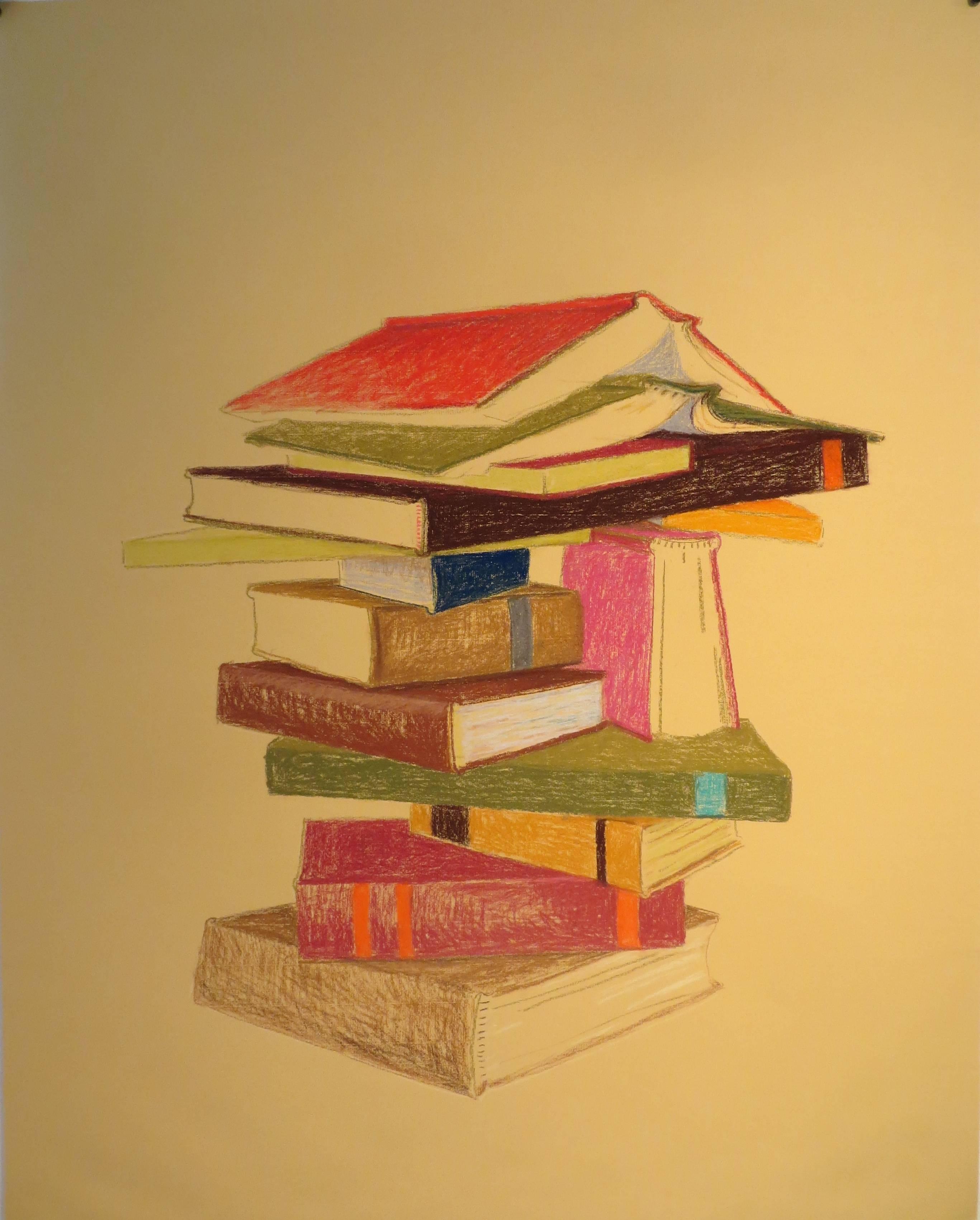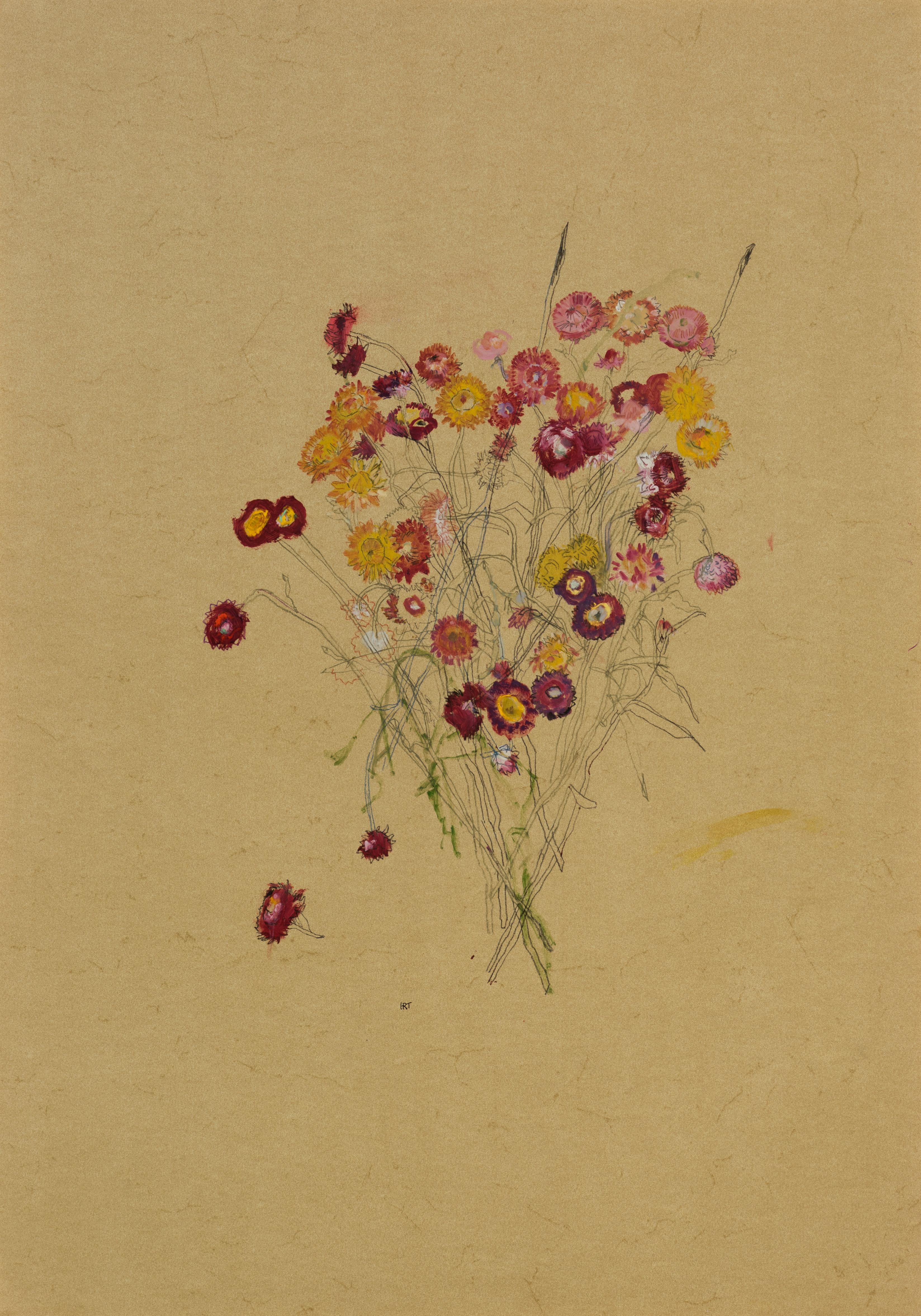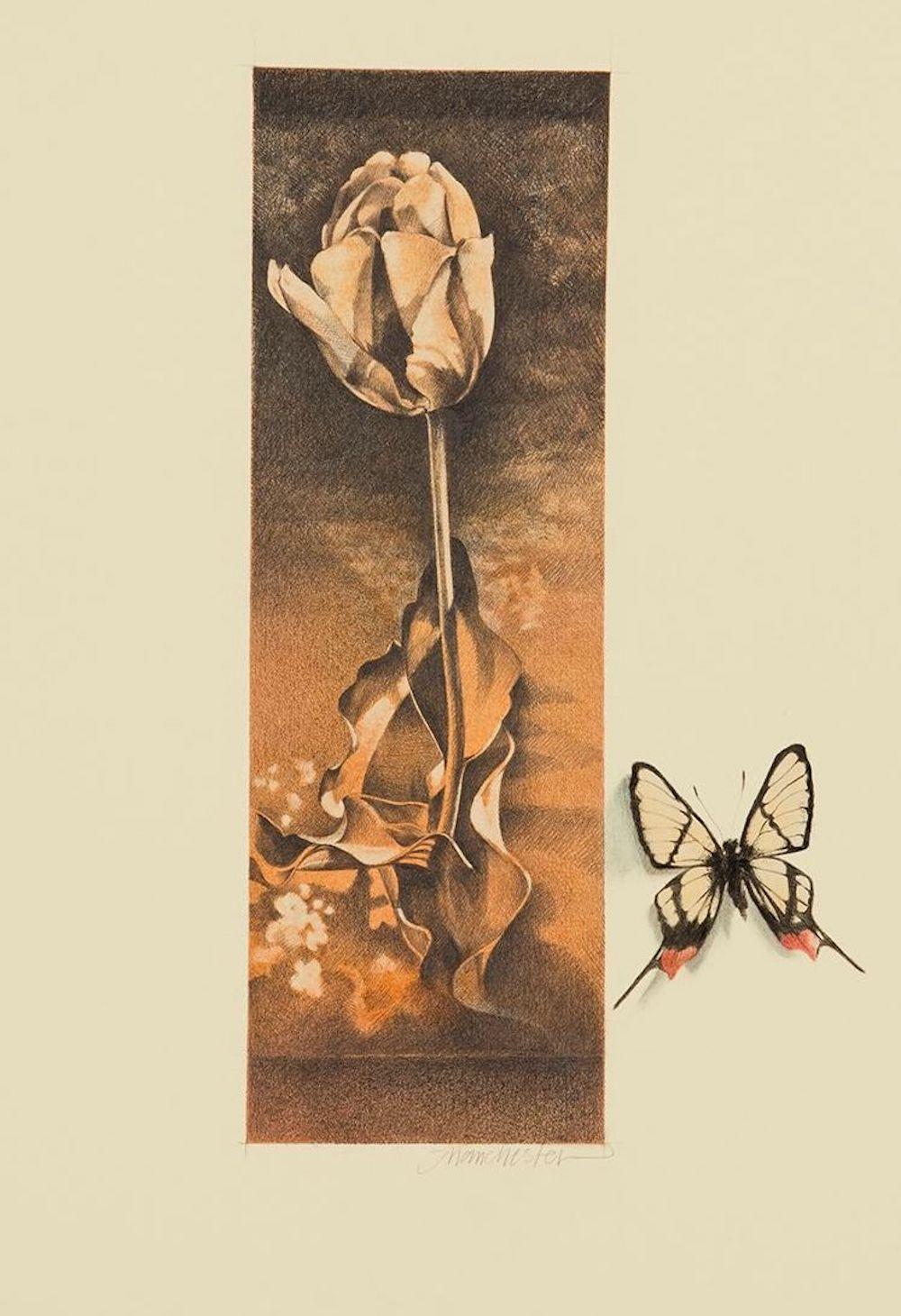Items Similar to UNTITLED No. 26
Want more images or videos?
Request additional images or videos from the seller
1 of 9
Marcelo BonevardiUNTITLED No. 261974
1974
About the Item
Avant-Garde
Argentine
- Creator:Marcelo Bonevardi (1929 - 1994)
- Creation Year:1974
- Dimensions:Height: 29 in (73.66 cm)Width: 23 in (58.42 cm)
- Medium:
- Movement & Style:
- Period:
- Condition:
- Gallery Location:New York, NY
- Reference Number:1stDibs: LU856567922
About the Seller
5.0
Recognized Seller
These prestigious sellers are industry leaders and represent the highest echelon for item quality and design.
Established in 1981
1stDibs seller since 2011
33 sales on 1stDibs
Typical response time: 18 hours
Associations
Art Dealers Association of America
- ShippingRetrieving quote...Ships From: New York, NY
- Return PolicyThis item cannot be returned.
More From This SellerView All
- SKY CASE XIIBy Louise NevelsonLocated in New York, NYwooden sculpture of found objects painted black. case with lid and hinges.Category
1970s American Modern Abstract Sculptures
MaterialsWood
- NIGHT COURIERBy Julio LarrazLocated in New York, NYwatercolor and pencil drawing of a small airplane. framed in a silver leaf frame. landscapeCategory
1980s Contemporary Drawings and Watercolor Paintings
MaterialsPaper, Watercolor, Pencil
- MAQUETTE FOR ADULT ALICE ABROADBy Valerie B HirdLocated in New York, NYVALERIE HIRD MAQUETTE FOR ADULT ALICE ABROAD, 2019 paper, watercolor, ink pencil, wood, nails, foam care, PVA glue 17 x 9 x 2 1/2 in. 43.2 x 22.9 x 6.4 cm. ShadowboxCategory
2010s Contemporary Mixed Media
MaterialsWood, Paper, Glue, Ink, Watercolor, Foam Board, Pencil
- NEARBYBy Carol K. BrownLocated in New York, NYThe artist is dealing with the fullness of life, while the ground becomes shakier. There is nostalgia for a lush world that never actually existed. Her lighthearted series of drawing...Category
2010s Contemporary Landscape Paintings
MaterialsInk, Paper, Watercolor, Photographic Paper, Graphite
- MUTE 4By Francisca SutilLocated in New York, NYFRANCISCA SUTIL MUTE 4, 2009/2010 Gouache on paper 29 1/8 x 22 in. 74 x 56 cm. abstractCategory
21st Century and Contemporary Contemporary Abstract Drawings and Waterco...
MaterialsPaper, Gouache
- DAMIEN HIRSTBy Valerie B HirdLocated in New York, NYWatercolor, gesso and gilding on BFK paper. Drawing of a medieval styled woman in front of a pharmacy/restaurant and bar. Satire.Category
Early 2000s Contemporary Figurative Drawings and Watercolors
MaterialsGold Leaf
You May Also Like
- KK Kozik, Bookstack 2, 2016, Conté, Rag PaperBy KK KozikLocated in Darien, CTKK Kozik is an artist living and working in Sharon, CT and Brooklyn, NY. Her paintings have ben exhibited widely in the United States and abroad and have been reviewed in publicat...Category
2010s American Modern Still-life Drawings and Watercolors
MaterialsConté, Rag Paper
- Flowers (Helichrysum), Mixed media on ochre parchmentBy Howard TangyeLocated in London, GBHoward Tangye (b.1948, Australia) has been an influential force in fashion for decades. Lecturing at London’s Central Saint Martins for 35 years, including 16 years as head of BA Wom...Category
2010s Contemporary Still-life Paintings
MaterialsPaint, Paper, Chalk, Charcoal, Crayon, Oil Crayon, Oil Pastel, Pastel, W...
- Garden Views #4, Fiddlehead Fern with DragonflyLocated in Burlingame, CASusan Manchester’s drawings of feathers and flora are meditations on the ephemeral nature of life, and they reflect the artist’s fascination with beau...Category
21st Century and Contemporary Realist Still-life Drawings and Watercolors
MaterialsConté, Crayon, Pastel, Handmade Paper, Graphite
- Garden Views #3, Tulip with ButterflyLocated in Burlingame, CASusan Manchester’s drawings of feathers and flora are meditations on the ephemeral nature of life, and they reflect the artist’s fascination with beau...Category
21st Century and Contemporary Realist Still-life Drawings and Watercolors
MaterialsPastel, Handmade Paper, Conté, Graphite, Crayon
- Garden FlowersBy Charles DemuthLocated in New York, NYCharles Demuth was one of the most complex, talented, and deeply sensitive artists of the American modern period. Whether he was painting floral still lifes, industrial landscapes, or Turkish bathhouses, art was, for Demuth, fraught with personal meaning. A fixture of the vanguard art scene in New York, Demuth navigated the currents of Modernism, producing some of the most exquisite watercolors and original oil paintings in twentieth-century American art. Demuth was born in Lancaster, Pennsylvania, the only child of a well-to-do family. He had an awkward and introverted childhood shaped by a childhood illness, Perthes, a disease of the hip that not only left him permanently lame, but, as part of the “cure,” bedridden for two years in the care of his mother. This long period of incapacitation had a deep impact on Demuth, who came to see himself as an invalid, an outsider who was different from everyone else. It was perhaps during this period of indoor confinement that his keen interest in art developed. Several relatives on his father’s side had been amateur artists, and, following his convalescence, his mother encouraged his artistic pursuits by sending him to a local painter for instruction. The majority of his early pictures are of flowers, a subject for which Demuth maintained a lifelong passion. Following high school, Demuth enrolled at the Drexel Institute of Art in Philadelphia, a school renowned for its commercial arts program. He advanced through the program rapidly, and, in 1905, at the encouragement of his instructors, he began taking courses at the Pennsylvania Academy of the Fine Arts. The two leading teachers then at the Academy were William Merritt Chase and Thomas Anshutz. Anshutz, himself a former student of Thomas Eakins, was well liked by his students, and is best known as the teacher of Robert Henri, John Sloan, and several of the other artists of the Ashcan School. Demuth, too, adopted a similar idiom, working in a controlled, realistic manner while at the Academy, where he remained until 1910. In 1907, Demuth made his first trip to Europe, staying in Paris. He spent time on the periphery of the art scene composed of the numerous American artists there, including John Marin and Edward Steichen. He returned to Philadelphia five months later, and immediately resumed courses at the Academy. Despite his introduction to advanced modern styles in Europe, Demuth’s work of this period retains the academic style he practiced before the trip. It wasn’t until he had summered at New Hope, Pennsylvania, in 1908 and 1911, that his style began to evolve. New Hope was a prominent American Impressionist art colony whose members were largely affiliated with the Pennsylvania Academy. Demuth dropped the conservative tone of his style and adopted a freer and more colorful palette. Although he remained based in Philadelphia, Demuth frequently went to New York during this period. Many of the same American artists of the Parisian art scene Demuth had encountered on his earlier European trip now formed the nucleus of New York’s avant-garde, which centered around Alfred Stieglitz’s 291 gallery. It wasn’t long before Demuth began to apply modernist-inspired strategies to his work. He was particularly influenced by the watercolor work of John Marin, also a former student of Anshutz, whose bold use of color in the medium Demuth freely adapted into looser washes of color. In 1912, Demuth again left for Paris, this time studying in the Académie Moderne, Académie Colorossi, and Académie Julian. In Paris Demuth met the American modernist Marsden Hartley. Hartley, a principal figure in the expatriate art circle, acted as a mentor to Demuth, and introduced him to the wide array of modern styles currently practiced in Europe. Hartley also introduced Demuth to many of the members of the Parisian avant-garde, including Gertrude Stein. Demuth was an aspiring writer, and he spent many hours in conversation with Stein. He wrote extensively during this period, and published two works shortly after his return to America. He also developed an interest in illustrating scenes from literary texts. From 1914 to 1919, Demuth produced a series of watercolors of scenes from books such as Emile Zola’s Nana and Henry James’s The Turn of the Screw. Upon his return to America, Demuth settled in New York. In 1914, Demuth had his first one-man show at Charles Daniel’s gallery, which promoted emerging modern American artists, including Man Ray, Rockwell Kent, Yasuo Kuniyoshi, Stuart Davis, and Max Weber. Demuth drew closer to the artistic vanguard in New York, becoming friends with many in the Stieglitz and Daniel circles, including Georgia O’Keeffe, Marcel Duchamp, Carl Van Vechten, and Edward Fiske. New York’s cosmopolitan atmosphere and active nightlife appealed greatly to Demuth. In a sketchy style well suited to watercolor, he painted many vaudeville and circus themes, as well as nightclub, café, and bathhouse scenes. Often with Duchamp, Demuth took part in an urban subculture replete with nightclubs, bars, drugs, and sexual permissiveness, which, for a homosexual artist like himself, allowed room for previously unattainable personal expression. Demuth’s pictures of sailors, bathhouses, and circus performers embody a sensual and sexual undercurrent, expressing the artist’s sense of comfort and belonging in the bohemian subculture of New York. Simultaneously, Demuth deepened his interest in floral pictures, painting these almost exclusively in watercolor. His style evolved from the broad color washes of his earlier pictures to more spare, flattened, and sinuous compositions, inspired by the drawings of Aubrey Beardsley and other artists of the Aesthetic Movement. Demuth’s flower watercolors are moody and atmospheric, sensuous and elegant, introspective and yet full of expressive power. Moreover they are beautiful, and are unequivocally among the finest still lifes in American art. Despite numerous subsequent artistic undertakings that led him in a variety of directions, Demuth never stopped painting flower pictures, ultimately adding fruits and other still-life objects to his repertoire. In 1916, Demuth began to develop a style later known as Precisionism, a form of landscape painting infused with Cubism, in which space is divided into precisely drawn geometric regions of color. Demuth first began to paint the landscape in an appropriated Cubist mode while on a trip with Hartley to Bermuda. In these early landscapes, in which the curvilinear forms of trees intersect the geometrically articulated architectural forms, Demuth explored ideas that shaped the future development of modernism in America. The full realization of Demuth’s explorations came after his return to America in 1917, when he turned his attention to industrial subjects. These works derive from a “machine aesthetic,” espoused by New York artists such as Francis Picabia, Joseph Stella, Albert Gleizes, and Duchamp, by which artists viewed machines as embodying mystical, almost religious significance as symbols of the modern world. Rather than painting the skyscrapers and bridges of New York as did most of his like-minded contemporaries, Demuth returned to his home town of Lancaster, where he painted factories and warehouses in a Precisionist idiom. The titles for these pictures are often contain literary references, which serve as clues for the viewer to aid in the decoding of the artist’s meaning. In 1923, Demuth planned a series of abstract “poster portraits” of his friends and contemporaries in the New York art and literary scene. In these “portraits,” Demuth combined text and symbolic elements to evoke the essential nature of his sitters’ distinguishing characteristics. In this fashion, he painted portraits of such artists as Georgia O’Keeffe, John Marin, and Arthur Dove. His most famous poster portrait, I Saw the Figure 5 in Gold...Category
20th Century American Modern Still-life Drawings and Watercolors
MaterialsPaper, Watercolor
- Tribute to Morandi #29By Bob Stuth-WadeLocated in Dallas, TXBob Stuth-Wade: Tribute to Morandi, 2018 "Life is what happens while I'm thinking of something else." "Driving. Listening to the radio. Talking on the phone. Thinking of where I'm ...Category
2010s American Modern Still-life Drawings and Watercolors
MaterialsPaper, Ink, Watercolor





